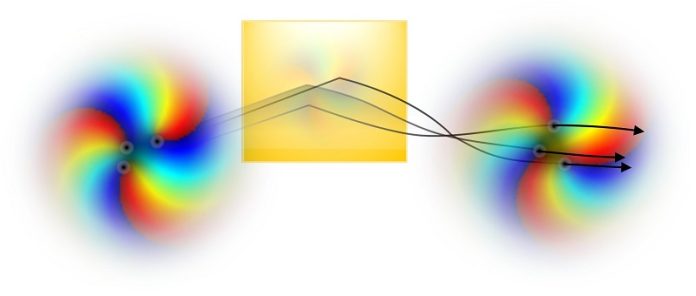
When we look into a flat mirror, we expect to see a clear reflection without any distortion.
But researchers at Tampere University have discovered that when light has a complex structure, tiny deformations can occur, even when reflected off a perfectly flat surface.
These subtle changes in the light field reveal important information about the material of the object the light reflects from.
This discovery, made by the Experimental Quantum Optics Group (EQO), confirms a prediction made over a decade ago by researchers in the UK.
The team’s work was published in Nature Communications, in an article titled “Observation of the topological aberrations of twisted light.”
Light behaves as a wave, a concept scientists have understood for more than a century. However, new discoveries about the behavior of light waves are still being made.
At Tampere University, the EQO team studies the structure, or shape, of light beams. The shape of light has become a key focus in modern optics, with applications in quantum physics, optical communications, and information science.
In their latest experiment, the researchers showed that when light with a complex structure is reflected from a flat surface like a mirror, its shape gets slightly distorted.
While these deformations are very small, they carry valuable information about the surface the light is reflecting off, such as the material properties of the object.
This effect, known as “topological aberration,” was first predicted more than ten years ago, but this is the first time it has been observed in a laboratory.
“Even though the idea of detecting this deformation seems simple, it took over a year of experimentation and adjusting the original theory to separate this specific effect from other natural light distortions,” said Associate Professor Robert Fickler, leader of the EQO team.
Twisted Light and Dark Vortices
One reason for the growing interest in light’s structure is the discovery of twisted light waves. These waves not only travel at the speed of light but also spin as they move. What’s particularly fascinating is that twisted light fields have points of complete darkness, called “optical vortices.” These dark spots are like whirlpools in water but without any light in the center.
The team, led by Academy Postdoctoral Researcher Rafael Barros, observed how these dark vortices move when the twisted light beam interacts with a flat object. By studying the movements of these vortices, the researchers learned how the properties of the object affect the behavior of the light.
The movement of these optical vortices can be quite complicated, but the researchers found that the collective motion of the vortices is influenced by the material properties of the object in a predictable way.
This discovery could lead to new methods for measuring the properties of materials using structured light waves, opening up exciting possibilities for future optical technologies.



